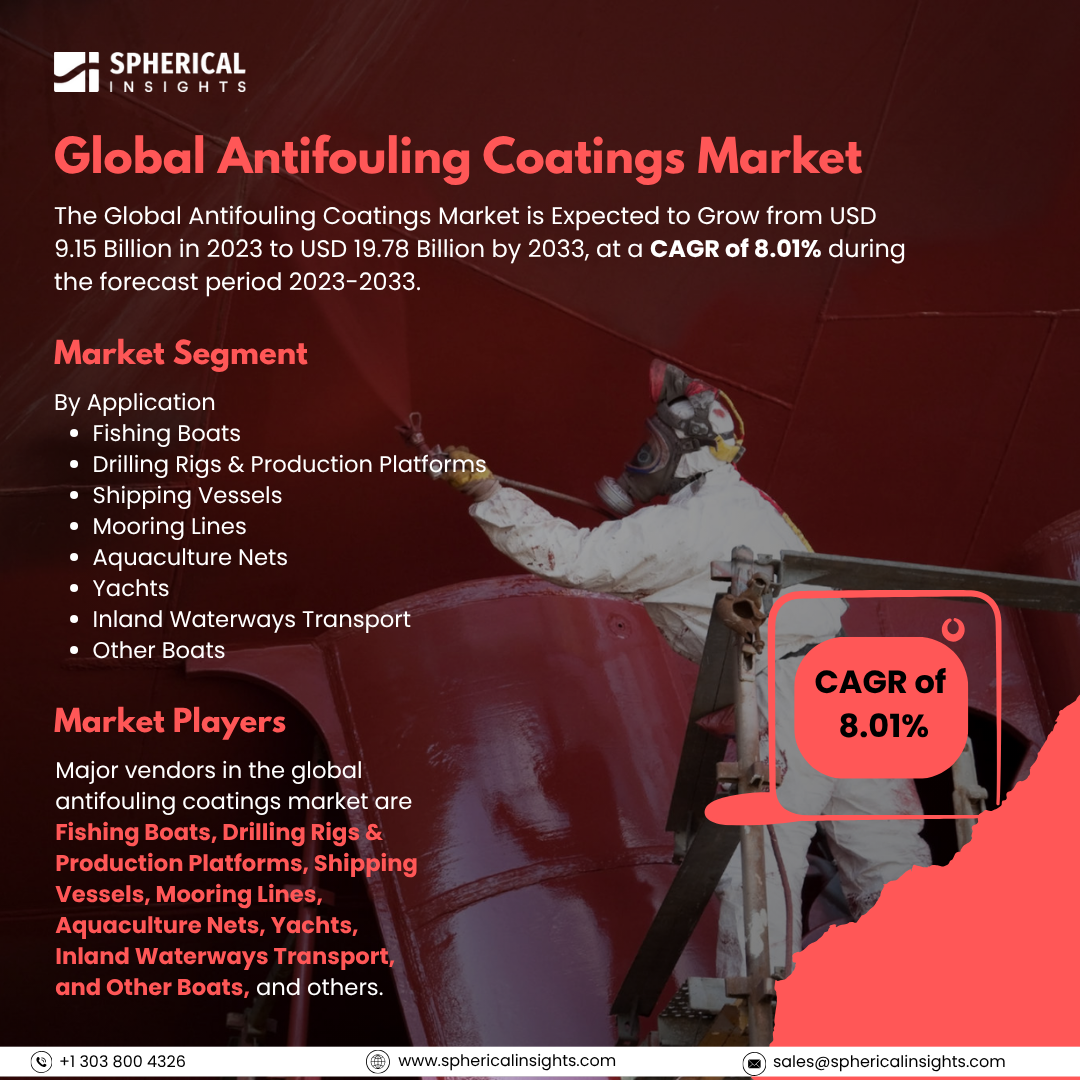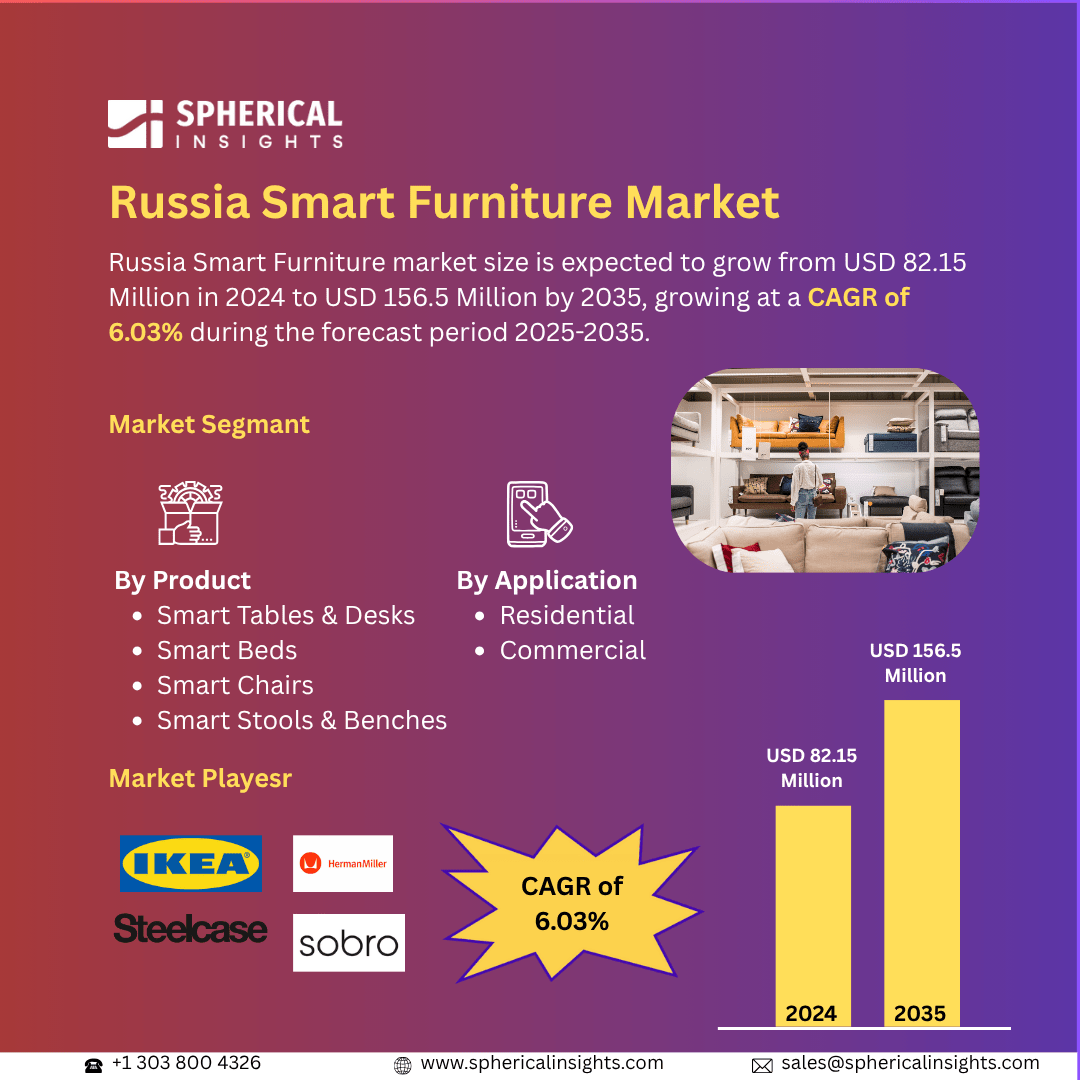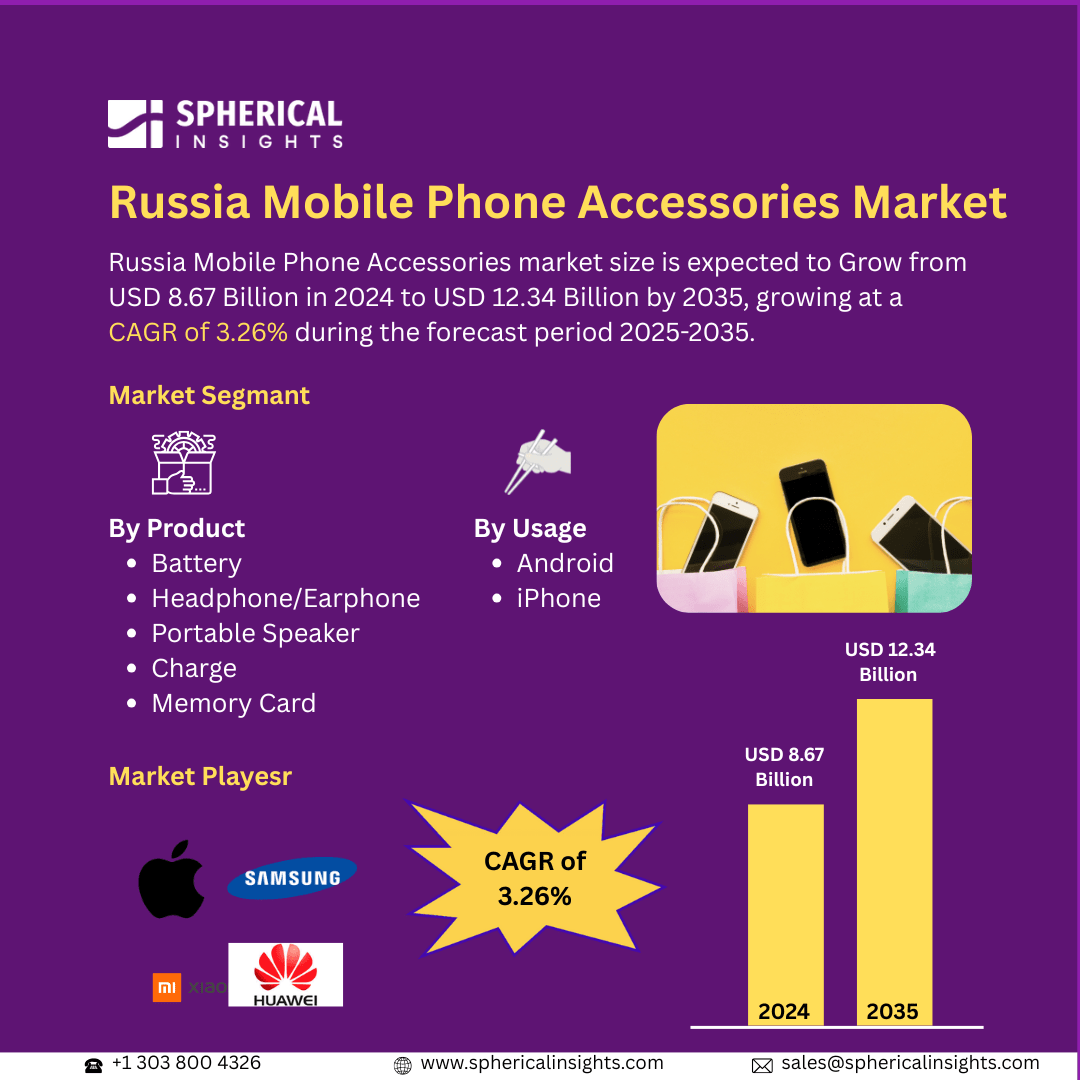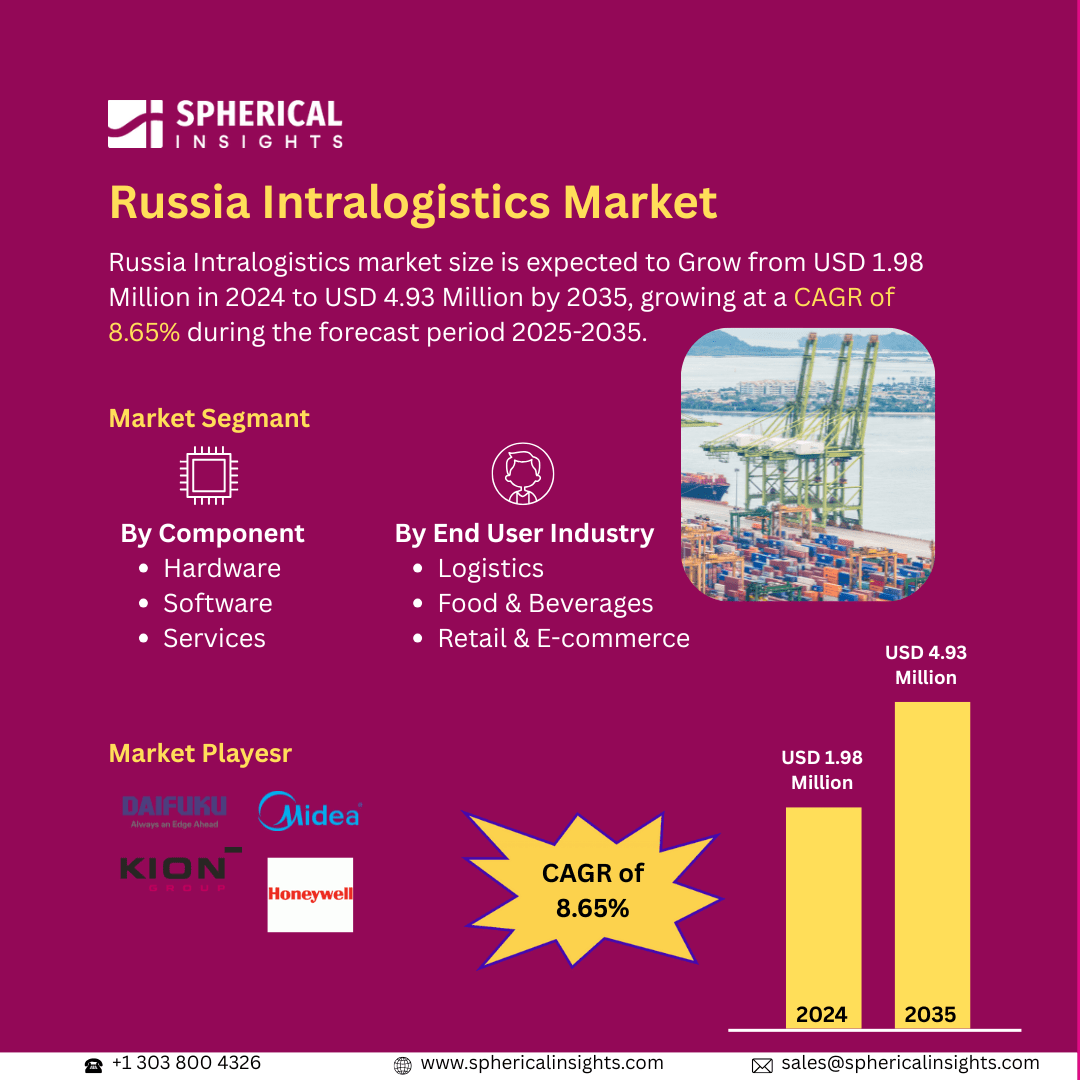Global Antifouling Coatings Market Size to Exceed USD 19.78 Billion by 2033
According to a research report published by Spherical Insights & Consulting, The Global Antifouling Coatings Market is Expected to Grow from USD 9.15 Billion in 2023 to USD 19.78 Billion by 2033, at a CAGR of 8.01% during the forecast period 2023-2033.
Browse 210 Market Data Tables and 45 Figures Spread Through 190 Pages and In-Depth TOC On the Global Antifouling Coatings Market Size, Share, and COVID-19 Impact Analysis, By Product (Copper-based Antifouling Paints, Hybrid Antifouling Paints, and Self-polishing Copolymer), By Application (Fishing Boats, Drilling Rigs & Production Platforms, Shipping Vessels, Mooring Lines, Aquaculture Nets, Yachts, Inland Waterways Transport, and Other Boats) and By Region (North America, Europe, Asia-Pacific, Latin America, Middle East, and Africa), Analysis and Forecast 2023 - 2033.
Antifouling coatings are surface treatments that are specifically used to inhibit the growth of unwanted sea life such as algae and barnacles on submerged surfaces, such as ship hulls, to reduce drag and fuel usage. This expansion is mostly fueled by mounting demand from the shipping sector, the role played by antifouling coatings and paints in minimizing friction and fuel consumption, and mounting demand for drilling rigs and production platforms. This market is anticipated to grow at a fast rate due to several other drivers, including availability, efficiency, and reasonable costs. Furthermore, the major growth factor impacting this industry is a growth in oil & gas and offshore wind farm energy installation. With mounting emphasis on renewable and clean power sources, use of antifouling coatings is expected to increase in such industries. However, the market for antifouling coatings is challenged by varying raw material costs, strict environmental regulations limiting biocides, demands for long-lasting and eco-friendly substitutes, and the innovation of substitute antifouling technologies.
The copper-based antifouling paints segment held the largest share in 2023 and is anticipated to grow at a significant CAGR during the forecast period.
Based on the product, the global antifouling coatings market is divided into copper-based antifouling paints, hybrid antifouling paints, and self-polishing copolymer. Among these, the copper-based antifouling paints segment held the largest share in 2023 and is anticipated to grow at a significant CAGR during the forecast period. This is posed by expansion in new ship repair and building activities coupled with rising demand for the recreational boat market. Copper-based type of product offerings by this market are very efficient at preventing fouling, which minimizes drags, fuel consumption, and emissions as well.
The shipping vessels segment held the largest share in 2023 and is anticipated to grow at a significant CAGR during the forecast period.
Based on the end-use, the global antifouling coatings market is divided into fishing boats, drilling rigs & production platforms, shipping vessels, mooring lines, aquaculture nets, yachts, inland waterways transport, and other boats. Among these, the shipping vessels segment held the largest share in 2023 and is anticipated to grow at a significant CAGR during the forecast period. The demand is driven by rising demand for international trade and transportation. The development of maritime tourism and recreational boating boosts the demand for antifouling coatings in non-commercial applications, including recreational yachts and cruise ships.
North America is anticipated to hold the largest share of the global antifouling coatings market over the forecast period.
North America is anticipated to hold the largest share of the global antifouling coatings market over the forecast period. The market is driven mainly by environmental rules, the development faced by shipping and marine-based industries, and technological advancements faced by the market. The innovation strategies employed by some of the leading organizations are likely to aid this market in terms of growth.
Asia Pacific is estimated to grow at the fastest CAGR of the global antifouling coatings market during the forecast period. This region is due to the strong presence of shipbuilding & offshore oil and gas projects and rising maritime infrastructure development. Growing demand from emerging economies like India, Indonesia, and Vietnam for antifouling coatings, fueling the growth of the region.
Company Profiling
Major vendors in the global antifouling coatings market are Fishing Boats, Drilling Rigs & Production Platforms, Shipping Vessels, Mooring Lines, Aquaculture Nets, Yachts, Inland Waterways Transport, and Other Boats, and others.
Key Target Audience
- Market Players
- Investors
- End-users
- Government Authorities
- Consulting and Research Firm
- Venture capitalists
- Value-Added Resellers (VARs)
Recent Development
- In March 2024, PPG Industries introduced a new innovation-driven antifouling coatings product, PPG NEXEON 810 ultra-low friction. The product provides an advanced, ultra-low-friction, and copper-free antifouling coating intended mainly for the marine sector. Amid the debate regarding a possible ban on copper-based antifouling coatings, the innovation provides a robust alternative in the market with the new introduction.
Market Segment
This study forecasts revenue at global, regional, and country levels from 2023 to 2033. Spherical Insights has segmented the global antifouling coatings market based on the below-mentioned segments:
Global Antifouling Coatings Market, By Product
- Copper-based Antifouling Paints
- Hybrid Antifouling Paints
- Self-polishing Copolymer
Global Antifouling Coatings Market, By Application
- Fishing Boats
- Drilling Rigs & Production Platforms
- Shipping Vessels
- Mooring Lines
- Aquaculture Nets
- Yachts
- Inland Waterways Transport
- Other Boats
Global Antifouling Coatings Market, By Regional
- North America
- Europe
- Germany
- UK
- France
- Italy
- Spain
- Russia
- Rest of Europe
- Asia Pacific
- China
- Japan
- India
- South Korea
- Australia
- Rest of Asia Pacific
- South America
- Brazil
- Argentina
- Rest of South America
- Middle East & Africa
- UAE
- Saudi Arabia
- Qatar
- South Africa
- Rest of the Middle East & Africa



